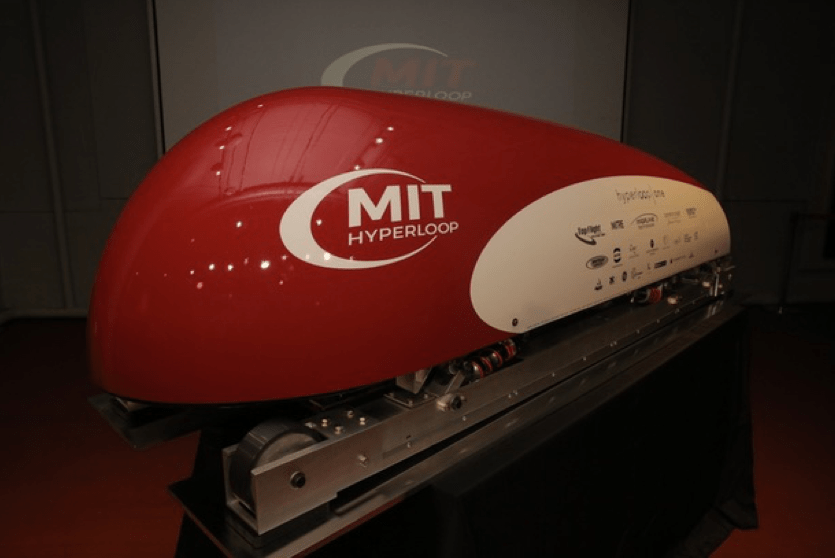


Tired of being stuck in traffic on the highway or waiting endlessly for a delayed subway? Almost three years ago, Elon Musk envisioned The Hyperloop, a new type of public transit that would whisk commuter-filled pods efficiently across hundreds of kilometers in a matter of minutes via tubes running either above- or below ground; and of course, only second to teleportation in terms of “overall coolness.” Despite start-ups trying to get in on the competition sponsored by Musk’s company SpaceX, a student team from the Massachusetts Institute of Technology emerged earlier this year as the front-runner when it won the competition’s design phase. On Friday, MIT finally unveiled the prototype pod that it will test this summer at a 1.6-kilometer racetrack near SpaceX’s headquarters in Hawthorne, California.
MIT‘s design placed first among more than 115 teams from 20 countries during the first phase of the SpaceX Hyperloop Pod Competition at Texas’s A&M University in College Station. The top five contenders included teams from Delft University of Technology in the Netherlands; the University of Wisconsin–Madison; Virginia Polytechnic Institute and State University (Virginia Tech); and the University of California, Irvine.
Despite Musk’s original idea of a pod floating on an air cushion or rolling along a track on wheels, MIT’s team ended up opting for magnetic levitation as a solution to a tough engineering problem: not just how to propel the capsule, but how to keep it on the track, and just as importantly, how to make it stop. The University of Colorado Denver’s HyperLynx team developed a hybrid of Musk’s original vision and MIT’s mag-lev principle — a pod that uses wheels for traveling at less than 160 kilometers per hour and an air cushion for higher speeds.
Greg Monahan, who leads the team’s levitation efforts, stated: “One of the most interesting parts of the Hyperloop is the attempt to go significantly faster than any other type of land travel,” says Greg Monahan, who is pursing a master’s in mechanical engineering and leads the team’s levitation efforts. Once a vehicle nears the speed of sound—1,236 kilometers per hour—”any type of contact with the ground or a track gets really complicated from an engineering standpoint.
Among the 30 finalists to publicly reveal their pod design, MIT’s mag-lev prototype, which costs about $150,000 to build, is 2.5 meters long, weighs 250 kilograms and is expected to reach speeds up to 369 kilometers per hour with an acceleration of 2.4 Gs. SpaceX’s decision not to require competition pods to accommodate passengers had a significant impact on the MIT design — so far, MIT’s designed pod cannot be made bigger to fit passengers.

